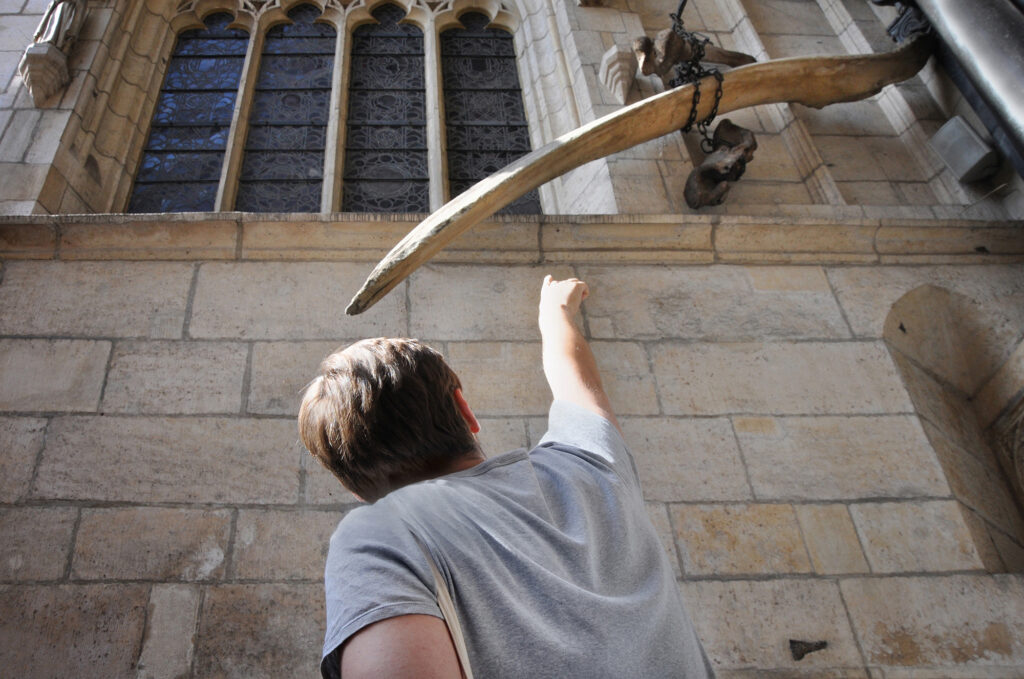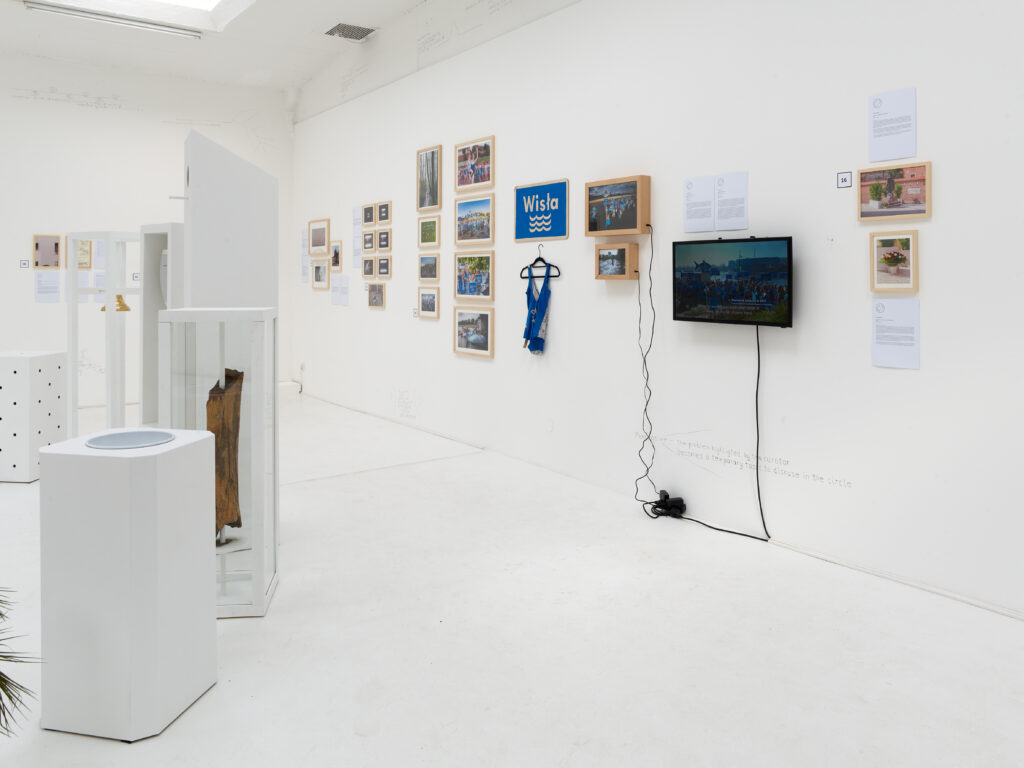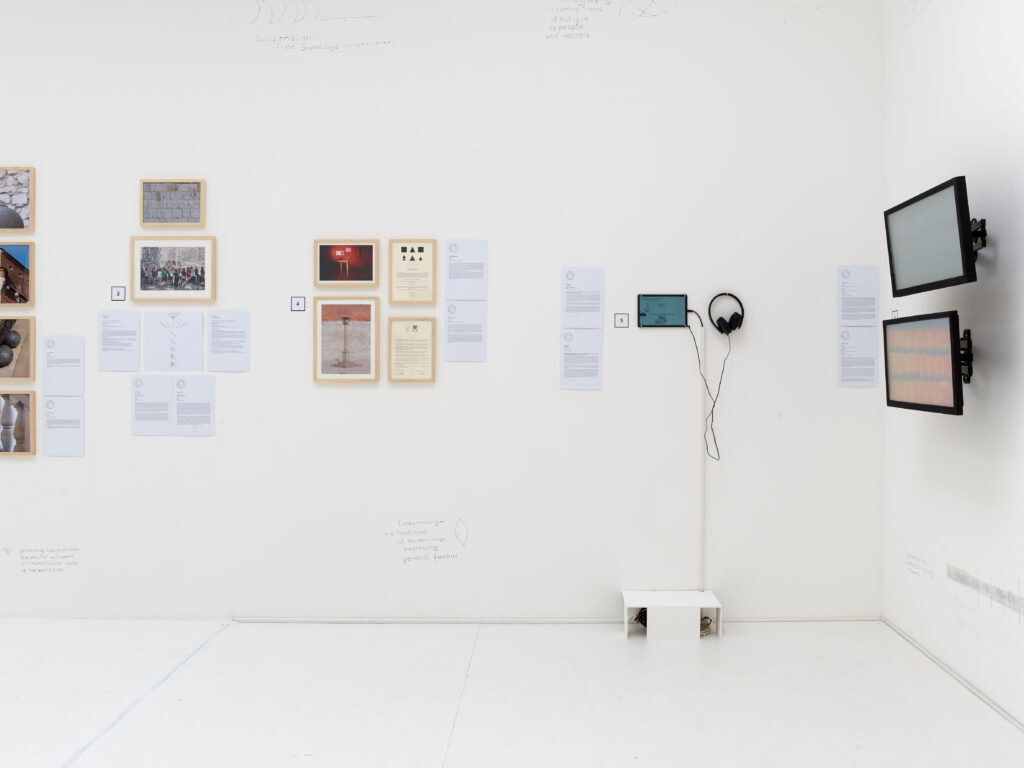WAWEL CASTLE CENTRE FOR CONTEMPORARY ART: THE FIRST DECADE
Tim Etchells, Justyna Gryglewicz, Michal Hyjek & Piotr Sikora, Michał Gayer, Jan Hoeft, Magdalena Lazar, Szymon Kobylarz, Cecylia Malik, Mateusz Okoński, Olof Olsson, Agnieszka Piksa, Ana Prvački, Marta Sala & Wojciech Szymański, Łukasz Skąpski, Kuba Skoczek, Łukasz Surowiec, Piotr Swiatoniowski, Johannes Wohnseifer, Jakub Woynarowski, and others
24 September — 18 December 2022
Opening: Fri 23 September, 7 p.m.
Opening with performances by Hubert Gromny, Krõõt Juurak, Simone Karl and Olof Olsson.
Accompanied by a publication with a text by the directors.
The Wawel Castle Centre for Contemporary Art acquired its first artworks in 2012, the year it was established. Today, the CCA Wawel Castle’s evolving collection contains almost 17 works from around the world, spanning the last 10 years. The collection includes an ever-expanding range of visual expression, embracing and reconceiving the materiality of the Wawel Castle itself. It involves sculpture, photography, drawing, architecture, sound art, sculptural intervention, media and performance art. The collection continues to expand its holdings of contemporary art from around the world. The centre is dedicated to expanding the geographical remit of its collection. The centre considers potential acquisitions of art by artists who have already made a significant contribution and have achieved national or international recognition.
The artworks in the collection are site-specific and refer to the unique location and history of the Wawel Royal Castle. This castle residence is located in central Kraków, Poland. Built at the behest of Casimir III the Great, it consists of a number of buildings from different periods situated around the Italian-style main courtyard. The castle, being one of the largest in Poland, represents nearly all European architectural styles of the medieval, renaissance and baroque periods. The Wawel Royal Castle and the Wawel Hill constitute the most historically and culturally significant site in the country. The castle is part of a fortified architectural
complex erected atop a limestone outcrop on the left bank of the Vistula River, at an altitude of 228 metres above sea level. The complex consists of numerous constructions of great historical and national importance, Iing the Wawel Cathedral, where Polish monarchs were crowned and buried. Some of Wawel’s oldest stone buildings can be traced back to 970 AD, in addition to the earliest examples of Romanesque and Gothic architecture in Poland. The current castle was built in the 14th century and expanded over the next hundreds of years. In 1978 Wawel was one of the first places to be declared a World Heritage Site, as part of the Historic Centre of Kraków. For centuries the residence of the kings of Poland and the symbol of Polish statehood, Wawel Castle is now one of the country’s premier tourist destinations.
The Wawel Castle Centre for Contemporary Art is committed to helping everyone understand, enjoy and use our collection. This fall we will launch a website that allows users to explore the collection by viewing art that is now on display at the Temporary Gallery, works that were recently added to the collection and an index of artists who have work in the collection.
Lending our artworks across the world supports our mission to help people to understand and enjoy contemporary art. By doing this, we aim to increase public access to the collection and reach new audiences, contribute to distinctive exhibitions and public programs in Poland and internationally, promote Polish art abroad, support artists and curators that would like to include works from the collection in their exhibitions and foster a spirit of collaboration and exchange between museums, galleries and festivals. The exhibition at the CCA Temporary Gallery in Cologne is the first comprehensive presentation of the collection of the Wawel Castle Centre for Contemporary Art. Spanning the 10 years of the centre’s existence, it features all artworks in the collection. A unique exhibition design reflects the site-specific character of each artwork, additional materials in the form of diagrams and photographic documentation are provided. The exhibition is accompanied by a public programme that includes guided tours and lectures. Up until the closing event of the exhibition in December newly produced artworks for the collection (by Ana Prvački and Johannes Wohnseifer) will be presented to the audience.
Aneta Rostkowska, Jakub Woynarowski
Directors
Image
Mateusz Okoński presenting his artwork from the collection of the CCA Wawel Castle, 2012. At the entrance to the Cathedral on Wawel Hill huge bones of prehistoric animals are hanging. The legend says that when the bones fall to the ground, the world will end. Several years ago, the executives of the Cathedral noticed that a chain that holds the bones is heavily corroded with rust and the bones might fall to the ground. They didn't want to create panic among Poles so they decided to secretly remove the chain and the bones, replace them with replicas for some time and then replace the replicas with repaired originals. The execution of this became the task of Mateusz Okoński, at this time a student of the Faculty of Sculpture at the Academy of Fine Arts in Kraków. He created the replicas and repaired the chain. However he did also something else - on the part of the bones not visible from below, he carved the words "Alea iacta est" ("The dice has been cast") changing the object into his own artwork. The replicas stayed at the Wawel Hill for some months becoming an (invisible) exhibition of artist's work.
Foto: Weronika Szmuc for KBF
2—14: Wawel Castle Centre for Contemporary Art, 2022 (Installation views)
Photos: Simon Vogel, Cologne













